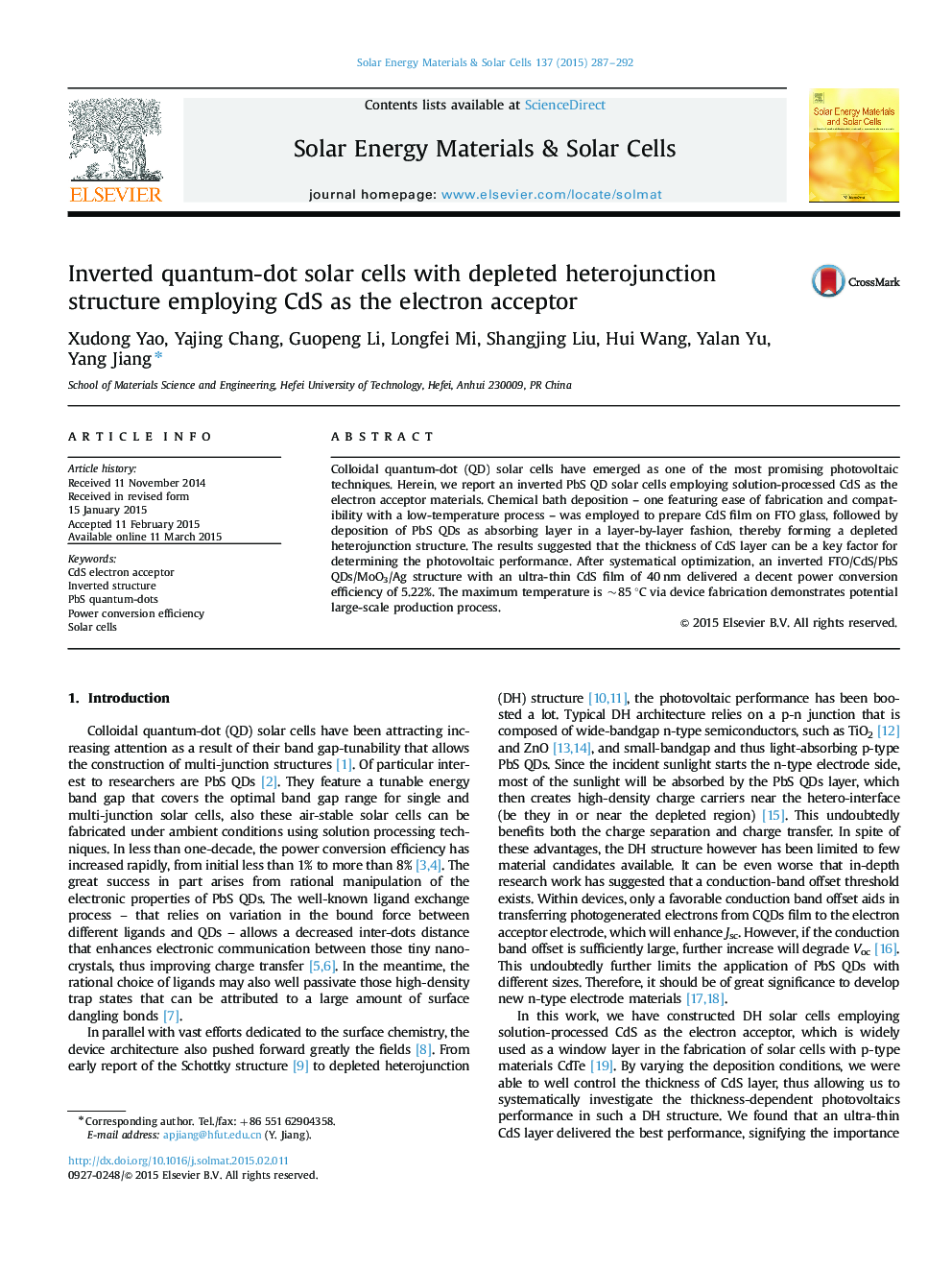| Article ID | Journal | Published Year | Pages | File Type |
|---|---|---|---|---|
| 77879 | Solar Energy Materials and Solar Cells | 2015 | 6 Pages |
•CdS with optimized thickness was used as the electron acceptor materials.•An inverted FTO/CdS/PbS QDs/MoO3/Ag heterojunction structure was built.•Low-temperature deposition demonstrates potential large-scale production process.•The CdS/PbS QDs solar cells deliver an efficiency of 5.22%.
Colloidal quantum-dot (QD) solar cells have emerged as one of the most promising photovoltaic techniques. Herein, we report an inverted PbS QD solar cells employing solution-processed CdS as the electron acceptor materials. Chemical bath deposition – one featuring ease of fabrication and compatibility with a low-temperature process – was employed to prepare CdS film on FTO glass, followed by deposition of PbS QDs as absorbing layer in a layer-by-layer fashion, thereby forming a depleted heterojunction structure. The results suggested that the thickness of CdS layer can be a key factor for determining the photovoltaic performance. After systematical optimization, an inverted FTO/CdS/PbS QDs/MoO3/Ag structure with an ultra-thin CdS film of 40 nm delivered a decent power conversion efficiency of 5.22%. The maximum temperature is ~85 °C via device fabrication demonstrates potential large-scale production process.
Graphical abstractFigure optionsDownload full-size imageDownload as PowerPoint slide
